Fencing is more than just a boundary; it’s an essential element of your property’s aesthetics and security.
When it comes to choosing fencing materials, wood has long been a favorite due to its natural appeal, versatility, and the variety of timber species available.
With various types of wood available, including options like Siberian Larch and Iroko, it’s important to decide which is best for your needs.
This guide explores the different types of wood suitable for fencing, the factors to consider when making your choice, and the pros and cons of opting for wood.
Whether you’re planning a new fence or looking to upgrade with styles like privacy panels, this information will help you make an informed decision.
Understanding the types of fences available and their benefits is crucial for making the right choice.
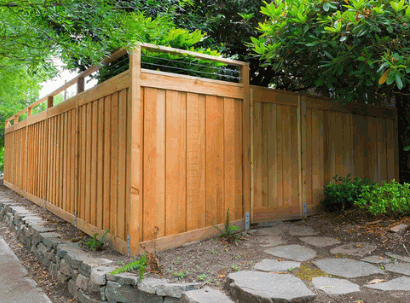
What Is Fencing?
Fencing is a structural enclosure that serves various purposes, such as defining boundaries, providing privacy, and enhancing the aesthetic appeal of outdoor spaces. Different types of fencing exist, including wood fences made from timber species like cedar, redwood, and larch, each offering unique characteristics in terms of durability, maintenance requirements, and costs. In gardens or yards, fencing can be an essential element for safety, decoration, and property delineation, making it a popular choice among homeowners.
Delve into: How To Install Glass Pool Fence
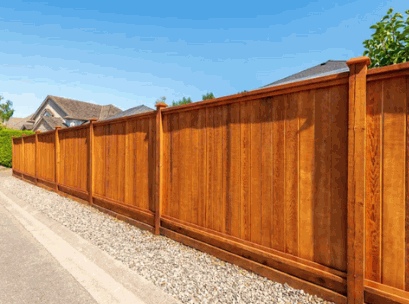
What Are The Different Types Of Wood Used For Fencing, Including Timber Species Like Oak And Tropical Hardwoods?
In terms of fencing, the type of wood used can significantly impact the durability, maintenance, and cost of your fence. Common choices for wooden fencing include species like cedar, known for its resistance to decay and insects, redwood, prized for its rich color, and larch, which offers a robust structure for outdoor boundaries. Each type has unique characteristics that make it suitable for different fencing styles and applications in gardens or yards.
Western Red Cedar
Western Red Cedar is a popular choice for fencing due to its natural resistance to moisture, decay, and insects, making it an ideal option for outdoor installations while also providing an aesthetically pleasing appearance that complements a variety of landscapes.
This wood not only offers remarkable durability but also enhances the overall look of any garden or outdoor space.
Here are some notable benefits of using this remarkable timber:
- Longevity: When properly cared for, Western Red Cedar can last for decades, adding value to any property.
- Low Maintenance: Unlike many other materials, it requires minimal upkeep, usually just occasional sealing or staining.
- Aesthetic Qualities: The rich color and natural grain patterns of this wood make it an attractive option, ensuring that your garden looks stunning all year round.
By choosing Western Red Cedar, property owners can enjoy a combination of strength, beauty, and natural resistance that is hard to beat.

Redwood
Redwood is another excellent option for fencing, celebrated for its striking appearance and exceptional durability, which can withstand the test of time with minimal maintenance.
The natural oils present in redwood not only impart a rich, warm hue but also enhance its ability to resist rot and insect damage. This leads to a cost-effective solution for homeowners who desire longevity in their garden applications without requiring frequent replacements.
The lightweight nature of redwood makes it easy to handle and install, streamlining the building process. It performs exceptionally well in various climate conditions, making it a versatile choice for different regions.
- Cost-effective in the long run
- Requires less maintenance
- Resistant to mold and decay
As such, using redwood for fencing ensures a combination of aesthetic appeal and practicality, allowing homeowners to enjoy their outdoor spaces more fully while spending less time on upkeep.

Pressure-treated Pine
Pine fencing is often favored for its affordability and availability, making it a popular choice among those looking to establish boundaries on a budget.
With its lightweight and ease of installation, many homeowners find themselves drawn to its practicality. While the reduced upfront costs can be appealing, it’s important to consider both the durability and maintenance that come along with this option. Pine can be susceptible to rot and insect damage without proper treatment, which might lead to higher long-term expenses if not monitored.
- Pros: Cost-effective, readily available, easy to install.
- Cons: Requires regular maintenance, less durable compared to hardwood fencing.
Ultimately, reviewing these factors will aid in making the best choice for outdoor applications.
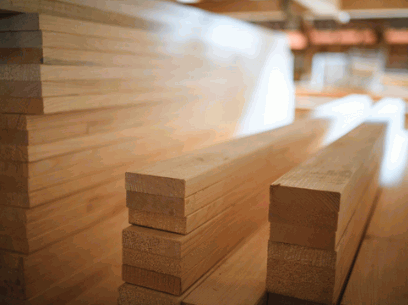
Cypress
Cypress wood is known for its natural oils that offer resistance to decay and insects, making it a durable option for fences in various outdoor environments.
This remarkable material not only enhances the aesthetic appeal of outdoor spaces but also ensures longevity compared to other types of wood. With minimal maintenance requirements, it remains a favorite among homeowners looking to build privacy fences. In addition, the cypress’s inherent resilience allows it to withstand harsh weather and resist warping, ensuring that your fencing investment endures over time.
- Ideal for a variety of fencing styles such as picket and privacy fences.
- Low maintenance means less hassle over the years.
- Natural resistance to pests ensures your fence remains intact.
With Cypress, the combination of beauty and durability is unmatched, providing an excellent choice for creating inviting and private outdoor spaces.

Spruce
Spruce is an economical wood choice for fencing, offering a good balance between costs and aesthetic appeal, especially when treated for outdoor use.
This type of wood is widely appreciated for its natural beauty, promoting a warm, inviting look in any garden or yard setting. It is essential to weigh both the advantages and disadvantages. On the one hand,
- Cost-Effectiveness: Spruce is typically less expensive than many other fencing materials, making it accessible for budget-conscious homeowners.
- Aesthetic Value: The light color and fine grain of spruce enhance the overall visual appeal of outdoor spaces.
On the other hand, maintenance requirements should not be overlooked:
- Frequent Treatment: Spruce requires regular sealing and staining to withstand the elements, increasing long-term upkeep costs.
- Durability Concerns: Without proper care, spruce may be prone to warping and insect damage.
While spruce can be a practical choice for fencing, diligent maintenance is crucial to maximize its lifespan and appearance.

What Are The Factors To Consider When Choosing The Best Wood For Fencing?
Selecting the best wood for fencing requires careful consideration of several factors, including durability, resistance to rot and insects, maintenance requirements, and overall costs. Each of these factors plays a critical role in determining the suitability of different wood species for specific fencing applications, ensuring that your outdoor boundary not only looks good but also stands the test of time.
Durability
Durability is a key factor in choosing fencing materials, as it determines how well the wood will withstand outdoor elements and extend its lifespan.
When selecting fencing options, one must consider not only the initial appearance but also how the material holds up over time. Different timber species offer varying levels of resistance to weather, pests, and decay, all of which play crucial roles in maintenance and longevity.
For instance, cedar and redwood are renowned for their natural oils that enhance durability, while pressure-treated pine is more budget-friendly but may require regular upkeep. Assessing factors like the local climate and potential exposure to moisture can guide decisions and impact overall costs.
Here’s a brief comparison of various timber species based on their durability and maintenance needs:
- Cedar: Naturally resistant to insects and decay, requires minimal maintenance.
- Redwood: Similar benefits to cedar, often seen as a premium choice.
- Pressure-treated pine: Cost-effective but requires sealing and regular treatment.
Understanding these nuances helps ensure a wise investment in both durability and aesthetics.
Resistance To Rot, Insects, And Decay
The wood’s resistance to rot and insects is crucial for ensuring the longevity and effectiveness of your fencing, directly impacting maintenance costs over time.
Choosing the right type of wood can significantly influence not only the lifespan of the fencing but also the overall budget you will need to maintain it. Investing in durable wood species capable of withstanding the elements will ultimately lead to fewer repairs and replacements, providing a more cost-effective solution in the long run.
- Cedar, known for its natural oils, offers excellent rot resistance.
- Redwood and Douglas Fir are other great options because of their inherent strength.
- Pressure-treated lumber is treated to resist both decay and insects, giving peace of mind.
In contrast, lower-quality woods may require frequent maintenance and could lead to unexpected expenses, making it essential to consider these factors before making a decision.
Maintenance Requirements
Each type of wood used for fencing has different maintenance requirements, affecting how often you will need to treat or replace parts of the fence to ensure its longevity and visual appeal.
For example, softwoods like Pine and Douglas Fir often require more frequent treatments due to their susceptibility to weathering and pest damage. Owners may find themselves reapplying sealants or stains every one to two years, leading to higher long-term costs and prices.
In contrast, hardwoods such as Cedar, Western Red Cedar, or Redwood boast greater natural resistance to rot and insects, which translates to significantly lower maintenance demands. This durability can result in great savings over time, as these woods may only need treatment every three to five years.
Here’s a quick comparison:
- High Maintenance: Pine, Douglas Fir – Require annual treatments; higher costs and prices.
- Low Maintenance: Cedar, Western Red Cedar – Need treatment every 3-5 years; more durable and cost-effective.
Ultimately, selecting the right wood species can lead not only to aesthetic satisfaction but also to a manageable upkeep routine.
Cost
Cost is a significant factor when selecting wood for fencing, as it often varies widely depending on the species and quality of the timber used, impacting not only the initial investment but also the long-term maintenance expenses that homeowners should consider.
In terms of fencing materials, various wood types can fit different budgets, ranging from economical options to luxurious choices. Here’s a breakdown of popular species and their costs:
- Pressure-Treated Pine: Typically the most affordable, ranging from $1.50 to $3.00 per linear foot. This option is known for its durability and resistance to decay. It’s a popular choice in regions like the UK.
- Cedar: Slightly more expensive at $3.50 to $7.00 per linear foot, cedar not only looks attractive but also has natural resistance to moisture and insects. Western Red Cedar falls under this category, providing excellent durability.
- Redwood: A premium option that can cost between $7.00 and $15.00 per linear foot, redwood boasts a striking appearance and longevity. Additional species such as Alaskan Yellow Cedar and Tropical Hardwoods offer similar premium qualities.
Ultimately, it’s crucial to weigh these options against installation costs and the desired lifespan, allowing for a more informed decision that aligns with both aesthetic and financial considerations. Suppliers like MANS Lumber can provide comprehensive options and guidance.
Aesthetic Appeal
The aesthetic appeal of wood fencing can greatly enhance the visual landscape of your garden or outdoor space, making it an essential consideration.
Choosing the right wood species plays a pivotal role in determining not only the overall appearance but also the durability and maintenance of the fence. For instance, cedar is often favored for its natural resistance to weather and pests, giving it a rustic charm that complements many garden styles. On the other hand, redwood provides a richer hue and boasts impressive longevity, making it an excellent choice for those seeking a premium finish.
- Installations of these woods can attractively define property boundaries.
- Different styles, such as modern or traditional, can be achieved through varied fence designs and finishes.
- Stains and sealants used can enhance the wood’s grain while providing added protection, appealing to various tastes.
Ultimately, the selected wood not only defines the landscape but also reflects personal preferences and values in outdoor aesthetics.

What Are The Benefits Of Using Wood For Fencing?
Wood fencing offers numerous benefits that make it a favored choice for homeowners, including a natural appearance that complements outdoor designs, versatility in styles, and environmentally friendly options. Its ability to blend seamlessly into garden settings while providing privacy and security adds to its appeal for various fencing applications.
Natural Appearance
The natural appearance of wood fencing creates a warm and inviting atmosphere, enhancing the beauty of any outdoor space.
When considering the integration of wood into outdoor environments, the distinctive aesthetic qualities it offers can significantly elevate the charm of your surroundings. The variations in color range from rich, deep hues to light, airy tones, allowing homeowners to choose a palette that complements their landscape. The unique grain patterns and textures found in different types of wood impart an artisanal feel that is hard to replicate.
- For instance, cedar fencing brings a subtle reddish tint that can create a stunning contrast against vibrant plants.
- Alternatively, the earthy tones of Oak or Iroko provide a rustic vibe, harmonizing beautifully with nature. Siberian Larch is another excellent choice for those seeking a unique look with durability.
These qualities not only enhance visual appeal but also contribute to a feeling of serenity, making outdoor spaces more enjoyable for relaxation and entertaining.
Versatility
Wood fencing, including options like Ayous and Cypress, is versatile, and available in various styles and designs that can suit different tastes and functional needs.
Whether one is looking for something rustic to match a country garden or a sleek design for a modern landscape, the options are abundant. Each style not only enhances the aesthetic appeal of the property but also provides essential benefits such as privacy and security.
- Traditional picket fencing often complements flower beds and adds a charming border.
- Privacy fencing, typically taller and more solid, creates secluded spaces perfect for outdoor relaxation.
- Split-rail fences, often made from Pressure-treated Wood, offer a more open feel, ideal for those wanting to blend with natural surroundings.
Wood fencing can be customized with different finishes and paint colors, allowing property owners to truly express their individuality while ensuring functionality in their gardens.
Easy To Work With
Wood is relatively easy to work with, making installation straightforward for those who choose to take on the project themselves.
This accessibility not only enhances their confidence but also allows for a smoother workflow, enabling them to tackle various projects, from furniture assembly to intricate designs.
The versatility of timber presents an opportunity for DIY enthusiasts to explore their creativity without overwhelming complexity. With minimal tools often required, the overall cost-efficiency becomes apparent, allowing individuals to save both money and time.
As they become more familiar with the properties of different types of wood, they can make informed decisions that align with their vision, resulting in satisfying outcomes.
- Familiarity with wood types increases design possibilities.
- Lower costs due to reduced labor fees.
- Improved skills through hands-on experience.
Environmentally Friendly
Choosing wood fencing can be an environmentally friendly option, especially when sourced from sustainable forestry practices.
By opting for this natural material, homeowners not only enhance the aesthetic appeal of their properties but also contribute to promoting greener choices. Wooden fences, when sourced sustainably, help conserve forests and reduce the carbon footprint associated with manufacturing synthetic alternatives.
In addition, they possess a number of
- biodegradable properties
- that enable them to decompose naturally, thus enriching the soil over time.
- The energy used in the processing of wood is significantly lower compared to that of steel or vinyl.
As a result, choosing wood can be seen not merely as a stylish decision but also as an impactful step towards reducing environmental impact.
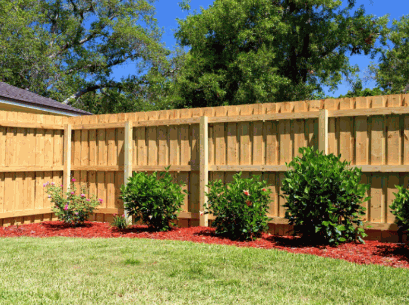
What Are The Drawbacks Of Using Wood For Fencing?
While wood fencing has many advantages, it also comes with several drawbacks that homeowners should consider, including susceptibility to damage, the need for regular maintenance, and potentially higher costs over time. Understanding these disadvantages will help you make informed decisions about your fencing options.
Prone To Damage
Wood fencing is often prone to damage from various factors including moisture, insects, and extreme weather conditions, necessitating additional care.
Understanding the vulnerabilities of wood fencing is essential for homeowners. Regular maintenance plays a critical role in prolonging its lifespan and minimizing repair costs. Using high-quality products from providers like MANS Lumber can ensure better outcomes. Among the factors affecting wood’s durability are:
- Moisture: Exposure to rain and high humidity can cause wood to swell, warp, or rot.
- Insects: Pests like termites and carpenter bees can tunnel through wood, compromising its structural integrity.
- Extreme Weather: Intense sun or freezing temperatures may lead to cracking and splitting.
To mitigate these risks, it is advisable to:
- Apply protective sealants or stains regularly to keep moisture at bay.
- Inspect for insect activity periodically and treat promptly if detected.
- Choose high-quality materials that are naturally resistant to decay.
By being proactive in maintenance, it’s possible to avoid costly replacements and ensure the wood fence remains a sturdy barrier for years to come.
Requires Regular Maintenance
Regular maintenance is crucial for wood fencing to ensure its longevity and effectiveness, including treatments, repairs, and inspections.
To achieve this, homeowners should understand the various types of maintenance that are essential. First, staining plays a vital role in protecting the wood from sun damage and moisture, which can lead to rot. Applying a high-quality stain every few years can significantly enhance the fence’s appearance and durability. Additionally, sealing acts as a protective barrier against water infiltration and pests, ensuring that the wood remains intact for many seasons.
- Routine inspections, especially on fences made of materials like Western Red Cedar and Alaskan Yellow Cedar, are also key; checking for signs of wear or deterioration allows for timely repairs.
- By addressing issues such as loose boards, nails, or rusted hardware promptly, especially on fences made of Siberian Larch or Iroko, one can prevent minor problems from escalating into costly repairs.
A proactive approach to fence maintenance is the best way to protect the investment.
Can Be Expensive
While wood fencing can provide aesthetic and functional benefits, the initial costs can be higher compared to alternative materials, especially when considering the various timber species available on the market today.
For instance, high-quality options like cedar, redwood, or Douglas Fir are known for their durability and natural beauty, yet they often come at a premium price. In contrast, materials like vinyl and chain links typically require a lower initial investment and boast lower maintenance costs over time. These alternatives may lack the warm appearance and environmental benefits of wood.
- Timber species like pine offer a budget-friendly option, but their longevity may not match that of more resilient woods.
- Installation costs can also vary; hiring professionals for wood fencing can increase the overall expense, particularly if custom designs are involved.
Ultimately, when evaluating costs, one must consider not only the initial outlay but also the long-term value each material provides.
Limited Lifespan
The lifespan of wood fencing, including options like pressure-treated wood, can be limited compared to other materials, making maintenance and timely replacement important considerations.
Several factors influence the longevity of wood fences, including climate conditions, species of wood used, and initial installation quality. Areas that experience heavy rainfall or prolonged exposure to sunlight can lead to faster degradation of wooden structures.
The choice of wood plays a crucial role; some types are naturally more resistant to rot and insect damage, ultimately enhancing the fence’s lifespan. Proper care, such as regular sealing and staining, can further protect wood from moisture and UV rays, preventing warping and splitting.
- Regular inspections
- Patching and repairing damaged sections
- Applying protective treatments
By taking these preventative measures, one can significantly extend the lifespan of wood fencing, ensuring it remains an attractive and functional boundary for years to come.
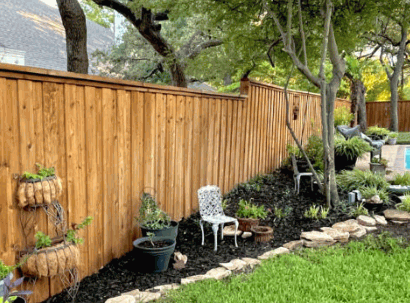
What Is The Best Type Of Wood For Fencing?
Determining the best type of wood for fencing often depends on various factors including durability, maintenance preferences, and intended use. Popular species like cedar, redwood, and cypress are frequently recommended for their strength and longevity in outdoor applications.
Cedar
Cedar is often regarded as one of the best types of wood for fencing, thanks to its natural resistance to moisture and insects, ensuring longevity and durability.
The unique properties of this wood species make it an excellent option for various environments. In coastal areas where humidity and saltwater can take a toll on less resilient materials, cedar stands up remarkably well, resisting rot and deterioration. Its natural oils help ward off insects, providing peace of mind for homeowners concerned about pest damage.
Cedar has maintained its aesthetic appeal over the years, requiring minimal maintenance. Unlike other woods that may warp or splinter, this species is known for its stability, making it an ideal choice for families.
- Low Maintenance Needs
- Natural Weather Resistance
- Long-lasting Beauty
When considering fencing options, it’s clear why many opt for cedar as their preferred choice.
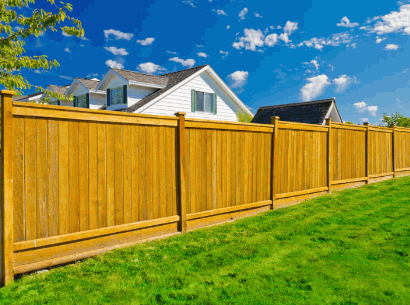
Redwood
Redwood is another top contender for the best wood for fencing, prized for its rich color and exceptional durability, which allows it to withstand various outdoor conditions.
This versatile material not only enhances the visual appeal of any property with its warm, earthy tones but also promises remarkable longevity, making it a value-driven choice for homeowners.
When considering installation, the ease of working with redwood contributes significantly to labor efficiency, which can lower overall costs. Redwood’s natural resistance to decay and pests means less frequent replacements and maintenance, translating to long-term savings.
- Its aesthetic charm enhances curb appeal.
- Redwood’s durability ensures a lasting investment.
- Minimal upkeep reduces future costs.
All these factors make Redwood an excellent selection for those seeking quality and beauty in their fencing solutions.

Cypress
Cypress wood stands out as a fantastic option for fencing due to its natural resistance to decay and insects, making it a reliable choice for outdoor installations.
Not only does cypress possess remarkable structural integrity, but it also enhances the aesthetic appeal of any property. With its rich colors and beautiful grain, a cypress fence significantly adds character to the landscape.
The longevity of cypress fencing is one of its standout qualities, as it can last for decades with minimal upkeep, saving homeowners both time and money in the long run. Its inherent oils provide additional protection against the elements, reducing the need for frequent sealing or staining.
Consider the following benefits:
- Durability: withstands harsh weather conditions.
- Low Maintenance: requires less frequent upkeep compared to other woods.
- Natural Beauty: offers a unique, rustic look.
This makes cypress not just an investment in fencing, but in enduring quality and style for your outdoor space.
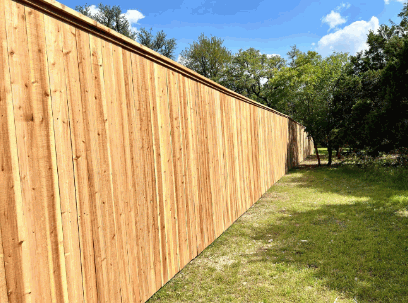
Spruce
While spruce may not offer the same level of durability as some other woods, its affordability makes it a viable option for those on a budget looking to establish a fence.
For individuals contemplating fencing solutions, choosing spruce opens up a discussion about both its advantages and drawbacks. On one hand, the cost-effectiveness of spruce fencing can be remarkable, making it accessible for homeowners aiming to enhance their property without breaking the bank.
It’s important to acknowledge that spruce requires periodic maintenance to prolong its lifespan.
- Pros: Inexpensive and easy to install
- Cons: Vulnerable to rot and pests
- Maintenance: Regular staining or sealing needed
With the right care, the natural beauty of spruce can significantly boost curb appeal, yet potential buyers should weigh the longevity concerns against their immediate budgetary constraints.

Pine
Pine is often chosen for its cost-effectiveness, providing an appealing option for those looking to build a budget-friendly fence without sacrificing quality.
This wood stands out not only for its affordability but also for its versatility, making it a popular choice among homeowners who want a balance between aesthetics and functionality. When considering pine for fencing, one should weigh its durability against natural vulnerabilities. Here are some key points to consider:
- Advantages: Pine is generally easy to work with during installation and can be painted or stained to match various decors, enhancing its visual appeal.
- Disadvantages: Its susceptibility to rot and insects means that pine may require more maintenance over time, which could offset its initial cost savings.
Thus, while pine offers an economical solution for fencing solutions, understanding its strengths and weaknesses is crucial for long-term satisfaction.


